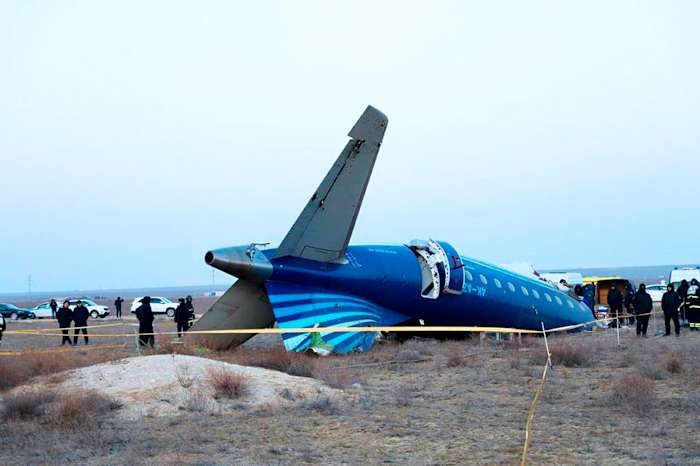On December 25, 2024, an Azerbaijani airliner tragically crashed in Kazakhstan while attempting to land, resulting in the loss of 38 lives out of the 67 passengers on board.
The Azerbaijan Airlines plane, an Embraer 190, had departed from Baku, the capital of Azerbaijan, and was headed for Grozny, a city in Russia’s North Caucasus. Reports indicate that the plane was diverted from its original course, a decision taken due to yet unclear reasons. As it approached Aktau, Kazakhstan, the aircraft descended sharply before crashing approximately 3 kilometers from Aktau’s airport, subsequently bursting into flames, as captured in cellphone footage that circulated online.
In response to the tragedy, Azerbaijan declared a national day of mourning. The nation paid respects to the victims by lowering national flags and coming to a collective halt at noon with sounds of mourning echoed by ships and trains. During a press conference, Azerbaijan’s President Ilham Aliyev stated that adverse weather conditions forced the plane’s diversion.
Meanwhile, the investigation into the crash is being jointly conducted by authorities from Kazakhstan, Azerbaijan, and Russia. Their efforts seek to unravel the exact cause of the crash. Embraer, the aircraft’s manufacturer, has expressed its commitment to collaborate with the investigations. Preliminary reports from Russia’s civil aviation authority, Rosaviatsia, suggested that a bird strike may have prompted the emergency landing attempt at Aktau.
However, alternate theories emerged when some experts examined photographs of the aircraft’s wreckage, particularly the tail section, which displayed unusual perforations. This led to speculation that the airliner might have been inadvertently targeted by Russian air defense, mistaking it for a Ukrainian drone. This assertion is supported by Mark Zee, from OPSGroup, who claimed a high probability of missile impact. Osprey Flight Solutions, a UK-based aviation security firm, echoed this sentiment, mentioning prior warnings about air defense systems in operation amid ongoing regional conflicts.
In Azerbaijan, media outlets like Caliber suggested that the airliner was hit by a Russian Pantsyr-S air defense system while nearing Grozny. This raised questions concerning why Russian authorities did not close the airport amid the drone threats or redirect the plane to another nearby Russian airport.
Despite such claims, Kremlin spokesman Dmitry Peskov cautioned against solid conclusions without comprehensive investigation results, a stance similarly taken by Kazakh and Azerbaijani officials.
As investigations continue, the cause of the Azerbaijani airliner’s crash remains undetermined. While weather conditions initially appear to be a factor, further examination of potential missile involvement highlights the complex geopolitical landscape impacting aviation safety. Authorities urge patience as they work to provide a definitive account of the tragic event.
Source: News4jax








